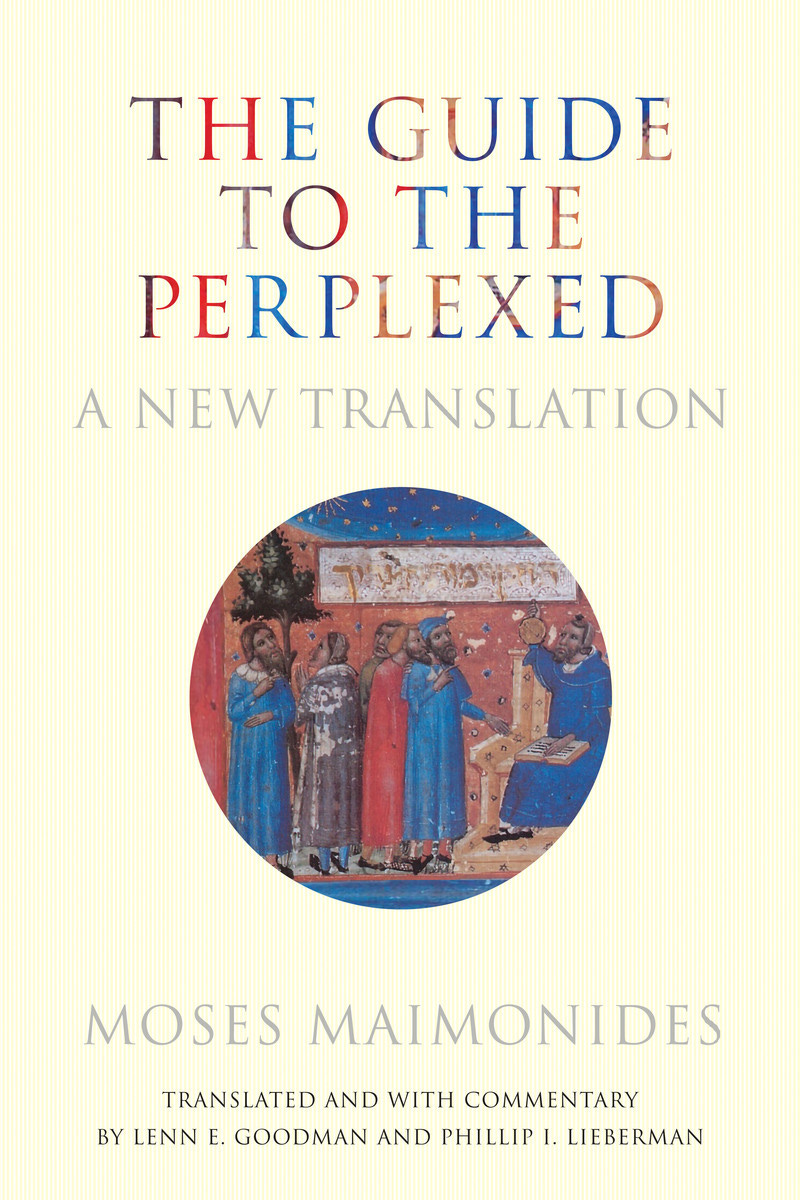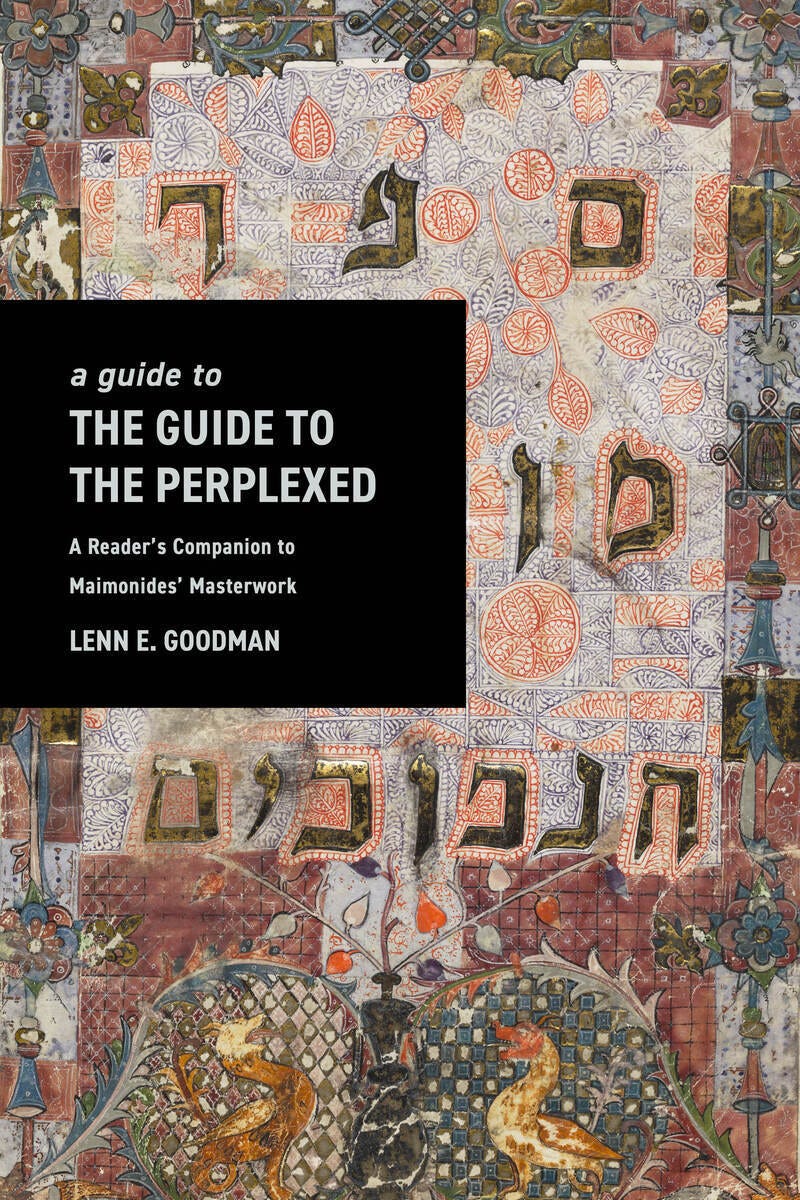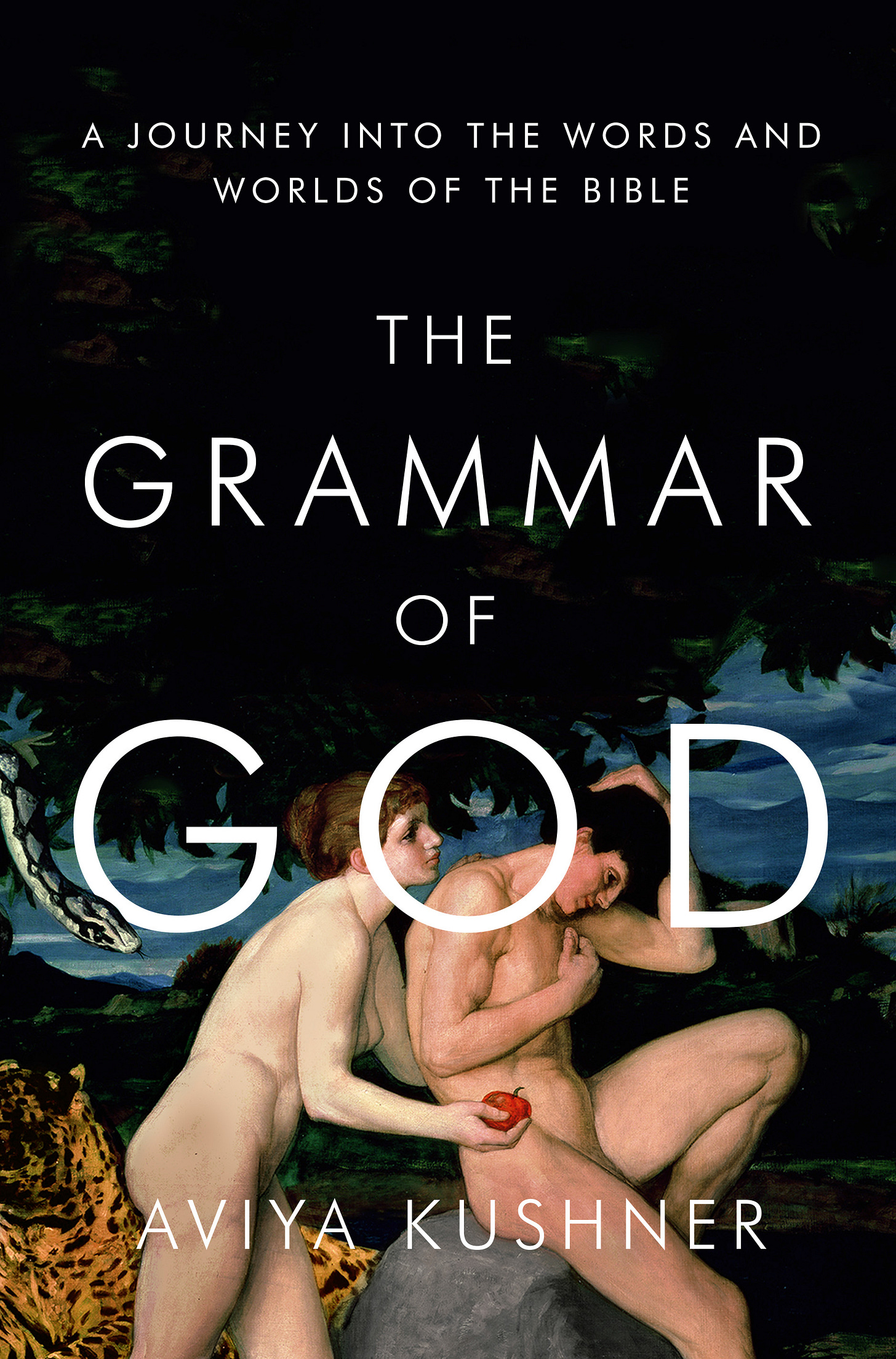For a long time, I was obsessed with the laws of charity by Maimonides—and found myself thinking about the author far too often. I still keep an eye on news from the Maimonides front. And there is news—a brand-new translation of The Guide to the Perplexed, just out from Stanford University Press, with a few excerpts available online.
Maimonides as a sculpture in the neighborhood he once lived in—the Jewish Quarter in Córdoba, Spain.
The guide is written as a letter to a disciple. “Written in Arabic and completed around 1190, the Guide to the Perplexed is among the most powerful and influential living texts in Jewish philosophy, a masterwork navigating the straits between religion and science, logic and revelation” is the publisher’s concise description of what is considered one of, if not the most, important texts in medieval Jewish thought.
As for Maimonides himself, it’s hard to describe him in a few words.
Encyclopedia Brittanica goes with “philosopher, jurist, and physician, the foremost intellectual figure of medieval Judaism.” Moses Maimonides | Biography, Philosophy, & Teachings | Britannica But I would argue that this doesn’t capture the deep waters of reading the Rambam’s writing. For example, it doesn’t catch the beauty of the idea of anonymity in charity—and the Rambam’s parsing of who should be anonymous to whom.
And of course, no encyclopedia entry can encompass the entire question of what counts as charity, along with what action is more charitable than another.
The guide weighs in at 704 pages, and fortunately, a chapter is available for reading online—titled “Maimonides’ World”—which helps put the Rambam into the context of his time. I found it really interesting, and I’ll highlight a bit of it here.
And if you would like to read the entire chapter, here is the link: Start reading The Guide to the Perplexed | Moses Maimonides,... (sup.org)
The translators of the new Guide are Lenn E. Goodman, Professor of Philosophy and Andrew W. Mellon Professor in the Humanities at Vanderbilt University, and Phillip I. Lieberman, Associate Professor of Jewish Studies and Law, Classical and Mediterranean Studies, and Religious Studies at Vanderbilt University. (I’m grateful to alert newsletter reader—the poet Rabbi Mark Elber, for pointing out that Goodman is the father of the novelist Allegra Goodman.)
And tantalizingly, there is also The Guide to the Perplexed: A Reader’s Companion to Maimonides’ Masterwork, by Lenn E. Goodman, to consider, at a mere 270 pages. As always, I recommend requesting books at your local public library.
Maimonides and His Superstar Status
In my early days of Maimonides obsession, I learned a lot from this review of a Maimonides biography by the legal scholar David Flatto, who happened to attend my high school. I love how Flatto describes Maimonides as a superstar in his review of Maimonides: The Life and World of One of Civilization’s Greatest Minds by Joel L. Kraemer.
“Already during his own time, Maimonides attained a larger-than-life stature among both adoring followers and vigorous critics,” Flatto writes. “Over the centuries, interest in the “Great Eagle”—of whom it was famously said that “from [the biblical] Moses until Moses [Maimonides] there arose no one like Moses”—grew to epic proportions, generating countless tales about his many accomplishments and powers of mind alongside hundreds of learned commentaries on his diverse writings.” Maimonides by Joel L. Kraemer – Commentary Magazine
By the way, Maimonides had a fascinating life story. His brother David supported him, until he died in a shipwreck, and Maimonides had to support his brother’s wife and family. He married at age 48 and had one son.
Maimonides and Poetics
That centuries-old trend of wanting to analyze the Rambam’s accomplishments continues with these new books. I was very intrigued by this sentence, in the introduction to the Reader’s Companion, which connects the Rambam and poetry.
“Beyond his role as a foremost Jewish jurist, today universally acknowledged and acclaimed, readers of the Rambam’s Guide to the Perplexed will readily observe that he was a penetrating reader of biblical and rabbinic poetics, whether he found it in the form of metaphor, allegory, or homiletic symbolism.” You can read more here: Start reading A Guide to <I>The Guide to the Perplexed</I> ... (sup.org)
Maimonides and His Names
Reading up on Maimonides always reminds me that he has many names.
Maimonides is what he is known in English, and in Hebrew, he is usually referred to as the Rambam. But “his name in Arabic, Mūsā bin Maimūn, signals his fame among Muslim scholars,” Goodman writes in the introduction to the Reader’s Companion.
“He was born in Cordoba in 11381 and died in Cairo in 1204. Tradition has it that he is buried in Tiberias. Even in Cordoba, which he and his family had to leave when he was a child, a handsome, if fanciful, statue of a seated man honors his youthful presence.” (That’s the statue at the top of this post.)
“Indeed, he continued decades after the family’s exile to call himself ha-Sefardi, “the Spaniard” in Hebrew, never losing his links to Andalusia and its heritage in philosophy, the sciences, and Jewish law.”
For those who are not already obsessed with Maimonides (and let me say it is easy to become fascinated), there is some intriguing biographical information in the larger Guide.
Maimonides and His Time
Maimonides lived in a frightening time, and reading about it can take your mind off our era. He was born around the time the Almohads came to power.
The “arrival of the Almohads witnessed a period of forced conversion and oppression of dhimmīs—that is, the “protected peoples” who lived under the agreement often known as the Pact of ʿUmar, in this case, Jews and Christians,” Lieberman writes in “Maimonides’ World”.
“These attacks on dhimmīs began in earnest within a few years of Maimonides’ birth, as Almohad forces occupied his birthplace of Cordoba in 1148 CE, and in many ways, Maimonides’ life may be seen as encompassing both the heights of Islamicate engagement with the timeless and universal problems of classical philosophy and the depths of religious persecution under a radical regime.”
Inside the amazing Mezquita in Cordoba, Spain. It was built beginning in 785 CE.
Maimonides’ family left Cordoba “shortly after the arrival of the Almohads and seems to have remained in the Iberian Peninsula for some twelve years,” Lieberman writes. “The details of the family’s travels during this time are spotty, although it appears that they did sojourn in Seville, during which time Maimonides seems to have become particularly interested in astronomy.”
What’s beautiful about reading these biographical details is considering how these travels—and the people he met along the way—expanded his mind and made his writings possible. The Rambam apparently met the son of the astronomer Jābir b. Aflaḥ (1100–1150), author of a famous commentary on Ptolemy’s Almagest, during this time.
But that wasn’t the only astronomy connection.
“He also studied under a pupil of Ibn Bājjah20 (Latin, Avempace, ca. 1085–1138). Ibn Bājjah himself wrote a work on astronomy, not presently extant, to which Maimonides refers (Guide II 24). Exchanges with these scholars may have contributed to one of Maimonides’ earliest compositions, a treatise on the calendar, completed in 1157–58.21” (You can see from the footnotes that this is an academic book.)
A sketch of the Muslim polymath Ibn Bājjah on Wikipedia.
And while our own era may seem bloody and frightening, reading about Maimonides’ time is a reality check, and the word “flee” appears often.
“Amid the continued depredations of the Almohads, some Jews converted and stayed in al-Andalus, but others chose to flee to Christian Spain, North Africa, or southern France. Maimonides’ time in al-Andalus came to an end around 1160, when his family, for reasons not entirely clear to us, decided to move from the Iberian Peninsula to Fez in Northwest Africa (Arabic, Maghrib), itself the very cradle of the Almohads.”
It’s easy to be perplexed by all of this. And so, the guide may be what we all need, right now.
Upcoming Events
I’ll be doing some listening and some speaking in the weeks ahead. On Wednesday, June 19th I will be at the 18th annual Rohr Prize in Jewish Literature ceremony in New York. I’m eager to hear this year’s finalists discuss their books. If you are there, please do say hello! I was honored to be a finalist for my first book, The Grammar of God, and am happy to celebrate with this year’s finalists.
This coming Shabbat, June 22nd, I will be speaking about The Grammar of God and how many Americans see the Bible at Anshe Sholom Bnai Israel in Chicago. If you are in Chicago and want to come, feel free to send me a note for details.
I’m excited to head to Asheville, NC, in early July for the Yetzirah Jewish Poetry Conference, where I’m honored to be a fellow; I’ll be giving a reading and a talk. Both are open to the public, and you can also register to join on Zoom. I’m excited to read with the amazing Dana Levin, Joanna Chen, David Caplan, and Owen Lewis on Tuesday, July 2nd, at 8 EST. (Doors open at 7:30.) 2024 Jewish Poetry Conference: Tuesday Fellows & Faculty Reading by Yetzirah (givelively.org)
On Wednesday, I am thrilled to be participating in a panel introducing a Jewish poet, with Carlie Hoffman, Joanna Chen, and Julie Enzser. If you’re in Asheville, come say hello, and if not, please feel free to join online here: 2024 Jewish Poetry Conference: Introduction to a Jewish Poet Panel by Yetzirah (givelively.org)
In other news, I am busily reading a wonderful new anthology of Jewish poetry—and will share some of it with you soon.
Hope to see you in-person or online in the weeks ahead!
*******************************************************************************************************
Hope you enjoyed this newsletter! Thank you for your support of writing with depth.











